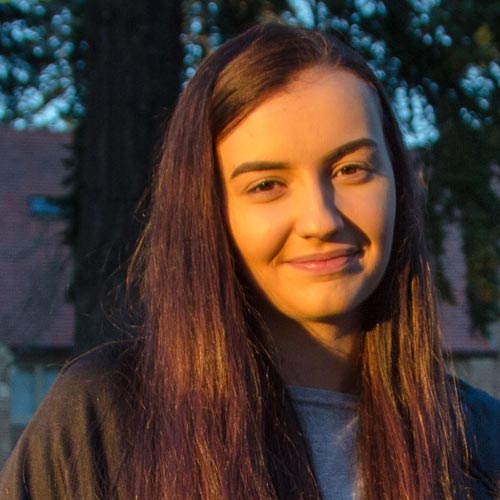
Mathilde Magga '20 speaks Norwegian more fluently than Sámi. Still, when her peers at Pacific Lutheran University ask, she tells them the latter is her first language.
“For a whole year, I didn’t have the guts to speak Sámi even though everyone spoke Sámi to me,” she recalled of her time in a Tromsø elementary school, where she learned all the subjects in the indigenous language.
Magga says her propensity for the language she struggled for years to learn is woven into her complex identity. It’s even tattooed on her right wrist.
“It says ‘Don’t forget’ in Sámi,” she said.
***
“They struggle,” Gazi Øzcan says of the young Norwegians who participate in the interactive exhibits at the Intercultural Museum in the Grønland neighborhood of Oslo. The Turkish museum director says it isn’t easy for them to confront their prejudices with the kind of vulnerability the space requires.
Still, as anti-immigrant and pro-nationalist attitudes bubble under the surface in a country that’s long been considered a humanitarian hub, Øzcan stresses that the stories told in his museum are more important than ever.
“We have to speak with young people about what prejudices are and what the consequences are,” he said.
***
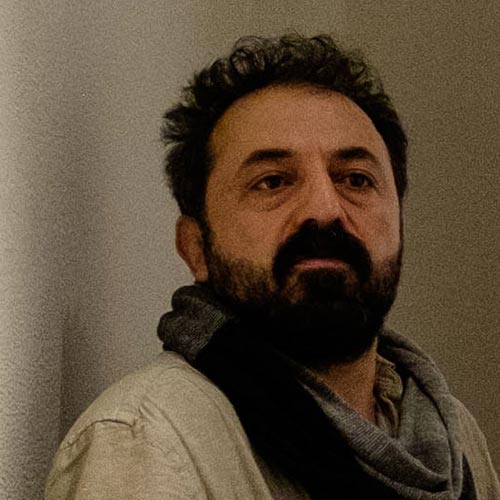
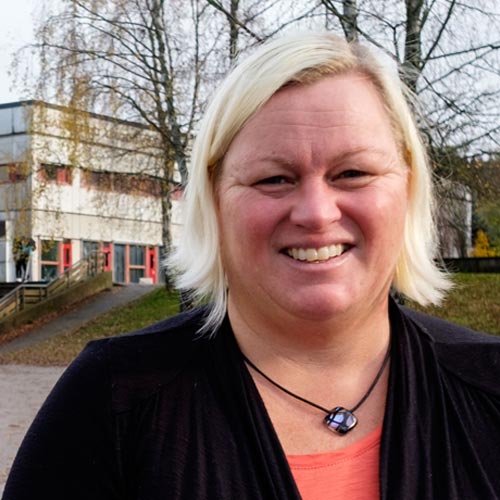
Unlike most middle schoolers, Asta Kvitne’s eighth-graders stick around as long as the teachers will allow them. “They stay here far too long,” Kvitne ’94 quipped. “We have to chase them out.”
The assistant principal at Haugerud School, located a short train ride from Oslo’s city center, serves students who represent 68 nationalities and at least as many languages. She says the school has near-perfect attendance for extracurricular events. Bullying is virtually non-existent.
The staff’s motto is “We win hearts.”
“To win the heart of our students is our main philosophy,” Kvitne said. “It means the most important thing is to have a good relationship. And that’s got to come from the heart.”
Magga, Øzcan and Kvitne each tell a distinct story of their experiences within Norway’s multicultural society. But they all share one common, deeply rooted truth: the desire for belonging despite difference.
Norway is home to an increasingly diverse population, much like other parts of the world where borders are less defined amid globalization and ever-changing technology.
And like other Western societies welcoming new people — and with them, new ideas — Norway is experiencing some growing pains. “Oslo is a multicultural city,” said Kvitne, who studied physical education at PLU. “This school reflects that.”
And the school is responding to it. Kvitne says Haugerud educates roughly 450 kids, many who either speak Norwegian as a second language or no Norwegian at all. Students from Turkey, Bosnia, Serbia and beyond share classrooms and subject matter. The teachers adapt their lesson plans to meet students where they’re at, to fit their individual needs.
Administrators foster a safe and inclusive environment, Kvitne said. “We work very hard at it,” she said. “That’s most important to us. You can’t be good in math or English if you aren’t happy here.”
The goodwill shows in the students. During a visit in the fall, there were lots of hugs to go around from smiling kids. Everyone, teachers included, went by first names. Kvitne suspects that’s a result of the school’s continuity; students stick with the same teacher throughout their entire time at Haugerud.
For students who don’t speak Norwegian — the primary language teachers speak in class — there is an intensive transition period, heavy on language learning. That’s especially true for newcomers, either immigrants or refugees, for which roughly 30 spots are kept open each school year.
“They need to learn Norwegian fast,” Kvitne said.
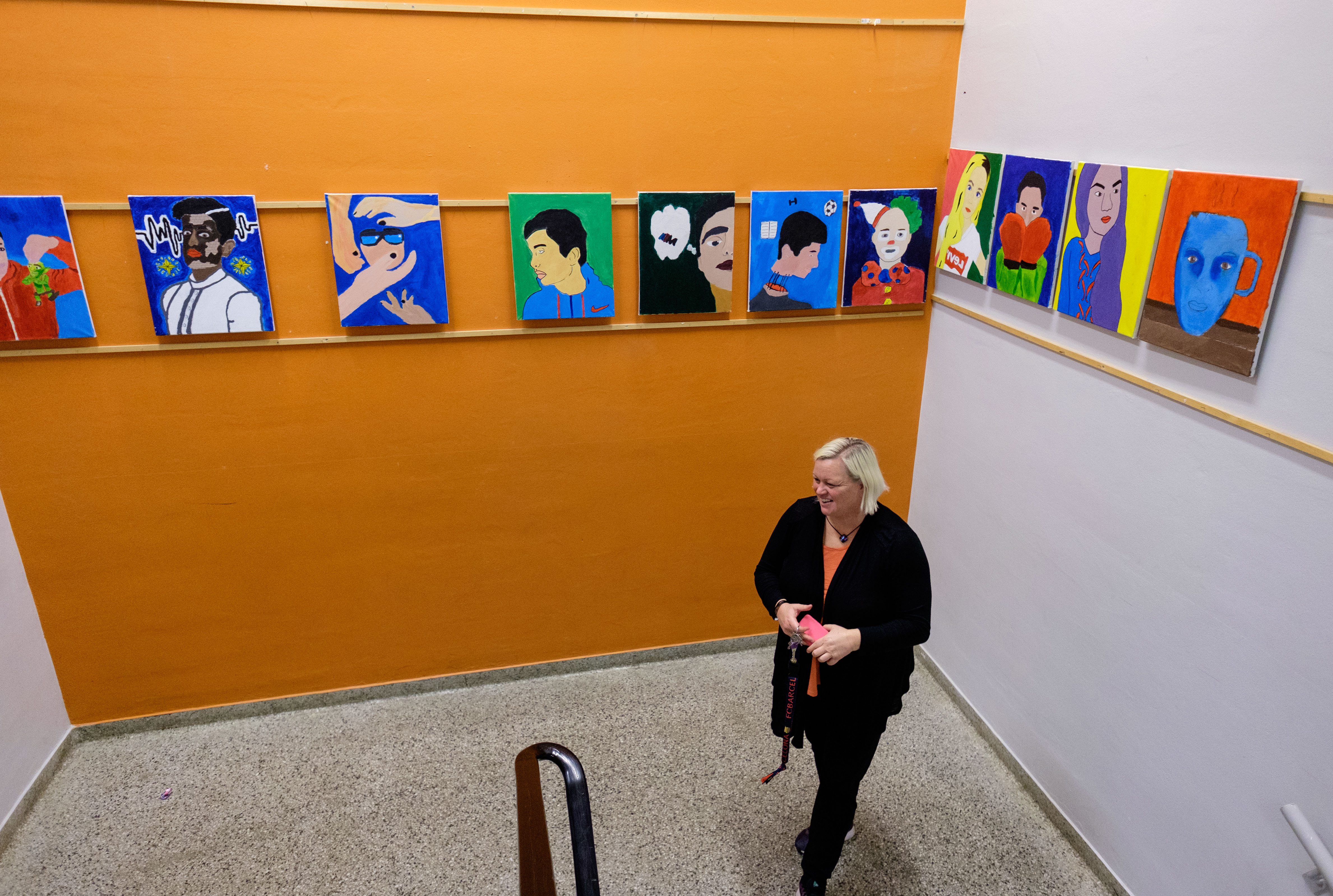
And they do. During the fall visit, many of the kids worked in small groups and one-on-one with teachers, asking questions and joking in Norwegian. If any problems arise, the school’s focus on individual care and engaged administration aims to alleviate them.
“I try to be in the classroom every day,” Kvitne said.
Those values and the school’s emphasis on care, Kvitne said, started with her education at PLU. As a former soccer player, she looked to her coach, Professor Colleen Hacker, for inspiration. Hacker taught her to focus on being her best self always, something Kvitne passes on to her students.
“That’s always something I try to live by,” she said. “These are values I learned at PLU.”
For Øzcan, people achieve their best when they critically examine their prejudices. That’s at the center of the most recent exhibition at the Intercultural Museum in Oslo. The title, which translates from Norwegian to “Typical Them,” centers on the way people label others who are different.
He said Oslo, despite being an international city, is a small place. Norway’s population as a whole is small, but its society is increasingly diverse. “We have people from all over the world here,” Øzcan said.
The interactive exhibits at the museum aim to uncover the tension that results from a clash of cultures. The most powerful one asks attendees, primarily young people, to print a picture from the internet that illustrates a prejudice they hold.
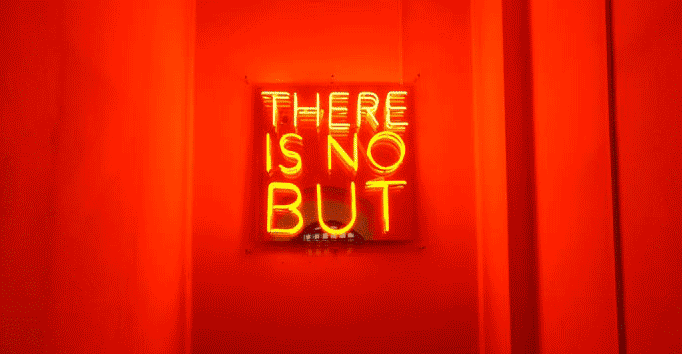
Dozens of sheets of paper, a collection of discomfort, dangle from the ceiling: a photograph of a woman in a hijab with the words “immigrants smell bad” written on it hang alongside pictures of right-wing extremists, people of color, poor people.
“They express themselves and learn this is about them,” Claudia Berguson, an associate professor at PLU, said as she thumbed through the somber art display. “It’s simple, but deep.”
Adjacent to the pictures sits a wall of doors adorned with striking labels — among them, a door labeled “hate.” Behind it, a simple red chair and headphones that spew abhorrent speech targeted at marginalized groups.
“I’ve seen the faces when people come out of this room,” Øzcan said. “They are changed.”
“I’ve seen the faces when people come out of this room,” Øzcan said. “They are changed.”
Magga says dealing with similar speech back home in Tromsø ultimately changed the way she looks at her identity even now, years after several older classmates hit her and called her names for being different.
It happened in 2011 during a contentious election, fueled by a polarizing debate around recognition of Sámi people. That year, the city council was considering a new designation for Tromsø that would have recognized it as a bilingual township, said Troy Storfjell, an associate professor at PLU who identifies as Sámi. The change, at its core, was aimed at reconciling the institutional efforts made throughout Norway’s history to undermine the language and culture of the Sámi, the only indigenous group in the country.
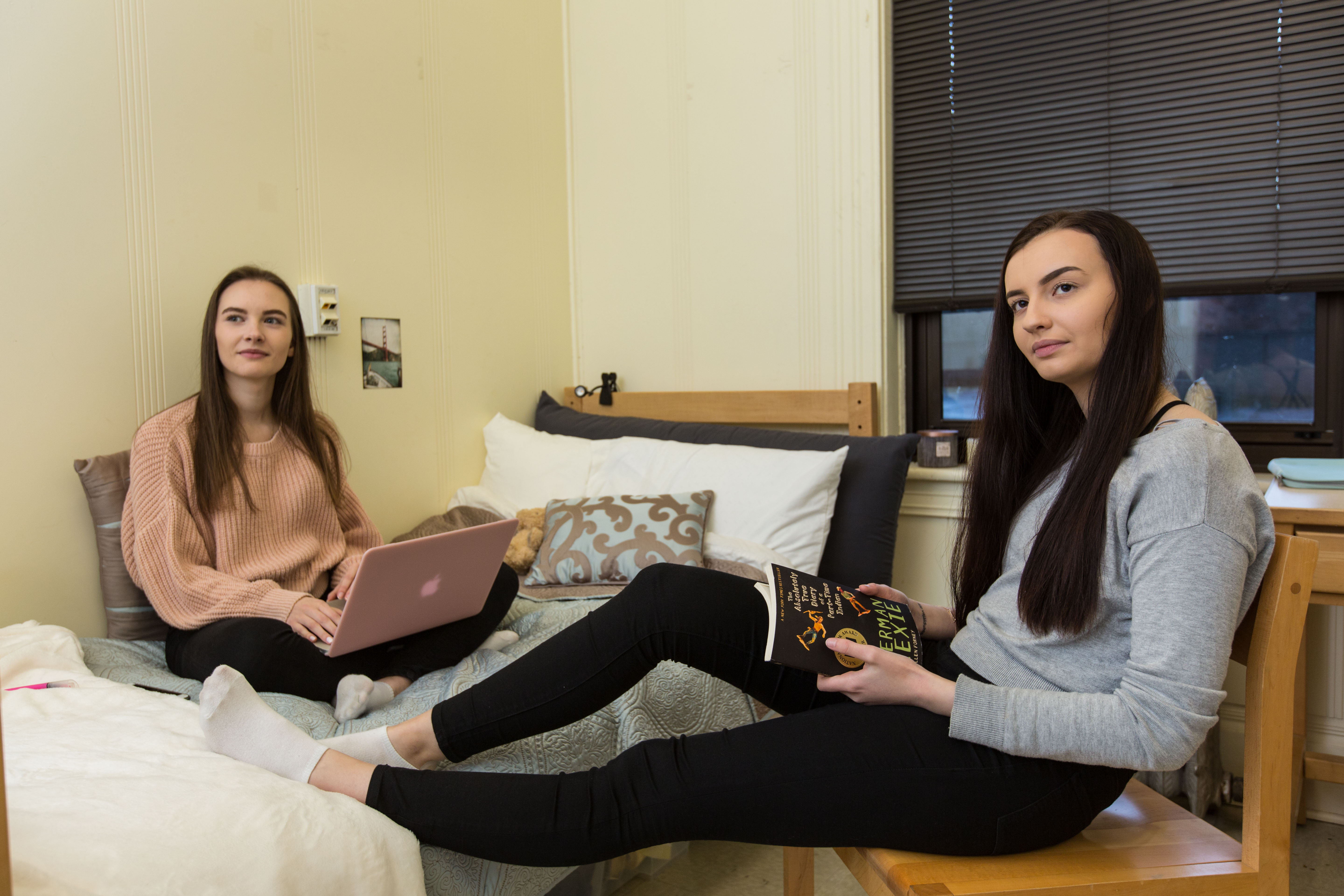
“We were children, so we didn’t understand the politics,” Magga said. “Children pick up what their parents talk about.”
The children who targeted Magga — in an incident she says started as a typical fight between middle-school girls — picked up negative attitudes toward their victim based on her identity as a Sámi.
“One girl said I was weak because I was Sámi,” recalled Magga, who vehemently pushed back. “They said ‘prove that you’re strong.'”
That’s when they hit her. Magga stayed silent for a long time; she feared that reporting what happened would label her weak, as they claimed. “I was scared they would be right,” she said.
The experience recently resurfaced, after a prominent politician used her story to show the error of his anti-Sámi ways and the effects those had on society — right down to the children.
“I shut it out for a very long time,” Magga said. Last year, for her final paper her senior year of high school, she reflected on that fight and another, internal one — learning and maintaining her Sámi language.
Magga is the only member of her family who speaks Sámi fluently; her mother picked up bits and pieces from her great-grandmother, despite her grandfather being forced into a boarding school and conditioned to shun his heritage.
Despite panging insecurity, Magga eventually gained the courage to speak the language more often, thanks in part to a close friend who spoke it with her constantly for years in and outside the classroom.
“I was kind of clawing my way through those seven years,” she said.
Magga is confident the struggle was worth it. “It’s a part of who you are,” she said of language. “It gets especially close to you when you know you can lose it, or someone has the power to take it away.”
She doesn’t take for granted her ability to speak Sámi: “It feels like something you should know. I almost lost it.”
And Magga is paying it forward when she can. Elle Sina Søerensen ’20, a fellow Lute who grew up with Magga in Tromsø, isn’t fluent in Sámi. But she is committed to learning more for similar reasons.
“It’s very nice having someone here who speaks Sámi, so if I want to learn and I want to practice I have someone to do that with,” said Søerensen, who also identifies as Sámi. “If we were to lose the language, after a while the culture would die out, as well.”
Søerensen says it’s challenging being Sámi at PLU, primarily because so few people know about the indigenous group. However, she enjoys having the opportunity to teach her PLU classmates about her heritage.
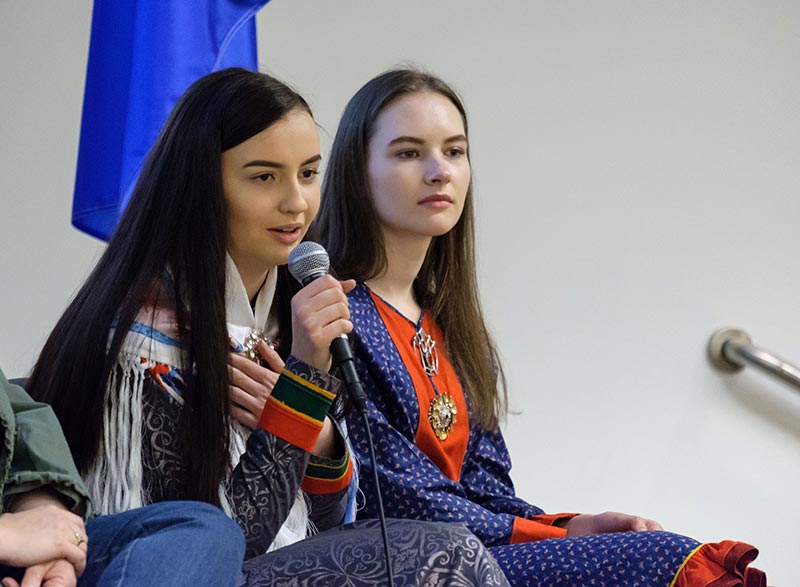
Magga and Søerensen both acknowledge that they experience microaggressions related to their Sámi background, about “how Sámi they really are” or “why they can’t get over the past.” But those obstacles don’t stop them from educating, both in Norway and at PLU.
“It’s important for people to understand what really happened,” said Søerensen, who noted that there are parallels between the experience of her people and that of Native Americans. “People are still affected by what happened many years ago.”
“The farther I go from home, the more I claim it and talk about it,” Mathilde Magga ’20 said of her Sámi roots. “I have this feeling I have to do something. It’s kind of my responsibility.”
Magga, who says family trauma is inherited through generations, embraces that task every day in her classes, most recently in her children’s literature course. She spoke up as the only indigenous voice during discussions of their assigned reading, The Absolutely True Diary of a Part-Time Indian, a novel based on experiences of author Sherman Alexie, who is a Spokane-Coeur d’Alene tribal member.
Magga says the tale of 14-year-old Junior resonated with her, and she was troubled by the dismissive feedback from her classmates. She says it’s important to speak her truth, even when she’s thousands of miles from Tromsø.
“The farther I go from home, the more I claim it and talk about it,” Magga said of her indigenous roots. “I have this feeling I have to do something. It’s kind of my responsibility.”

